- August 20, 2019
- Posted by: optimaadmin
- Category: Behaviors, Coaching The Handler

Keys to Successful Dog Training #4

I am so excited to share this next key with you because with this one is a game changer for you and your dog. Can you guess what it might be? Since we have already talked about your motivation to train, your attitude towards training and providing a controlled environment, what could be next? The waiting is over! Your next key to Successful Dog Training is: Building Communication.
You might be thinking, ‘I’ve got this one down pat. My dog listens to me, most of the time, so we are good to go.’ Wait just a minute! This blog is about the two-way communication you and your dog need to create in order to really know what each other is saying. It’s also about helping you understand that you each have different ways of communicating. Your most used communication style is verbal and your dog’s most used style is non-verbal. This difference presents a challenge and that’s why I am writing this blog.
Most of the time when I am training with my clients I have them show me how they tell their dog to do something. I hear them say the command multiple times while almost doing the command as a demonstration. It looks like this….

Mary is standing in front of her dog bending forward while saying, ‘down Lulu, down Lulu, down Lulu’ as she continues bending towards her toes and the dog is watching her. I chuckle because at this moment the dog is watching its owner do something but not feeling commanded to go into the down position. Once I see this ‘style’ of communication I know for certain that I need to help Mary gain an understanding of how to communicate with her dog. I need to help her understand that her dog wants to be communicated with more with her hand and body than her words. That is often times very challenging because we as humans are very used to saying what we want.
Of course there is an exception to every rule, like the command for come. I instruct that you need to say their name (once) and show the hand command for come. Because you aren’t repeating their name over and over they take you more seriously and respond. It is very important to speak in a tone that is cheerful, not tense and angry. Just like you and I, a dog responds better to positive communication. When I see a client give a cheerful command and their dog willingly responds I could just burst with pride because they are getting it. They are communicating well.

Now let’s look at the other communicator, your dog. Dogs are very expressive and in order to successfully communicate with them we need to at least be aware of how they say things so we can have an idea of what they are trying to convey. Did you know that a wagging tail does not always mean the dog is happy? For instance, the tail might be wagging but if the dog’s body is stiff, the ears are back and the dog is in a crouching position, the body language are telling you that the dog is not happy. In order to know what the dog is trying to say you need to observe the whole dog; tail, eyes, ears and body. That takes time and the more time you spend with your dog the better you get at ‘hearing’ what it is saying.
Basic dog non-verbal communication happens in five states of mind: relaxed, aroused, anxious, fearful and aggressive. If dogs would keep their communication clear cut and only use one state at a time that would be so helpful. Sometimes they do but sometimes they go from one state of mind to the next in an instant, as a situation is happening. Your dog is trying its best to understand what is happening and respond given its experiences in similar situations and we need to be quick to read their communication and respond in a way that helps them be in a stable, relaxed state of mind as often as possible.
Here are a few examples of what they will do in each state.
1. Relaxed – soft eyes, relaxed ears, ‘smiling’, laying down, even in a frog-leg position.
2. Arousal – its fur can be standing up, ears at attention, and body stance is upward and erect. The tail is often up and wagging stiffly, and the eyes are open wide and very focused. The dog could also be barking and/or lunging.
3. Anxious – excessive panting, pacing, and lack of focus, lick his lips, yawning, and have a slightly lowered body stance with his ears slightly back. He may wag his tail slowly and look away

or move away from people.
4. Fearful – mouth tightly closed, cower or lower his body, lower or tuck his tail, or put his ears back. He may also tremble or shake, look away to avoid eye contact, or lean back to avoid the stimulus that is perceived as frightening. Or he can go the other way and act ‘shut down’.
5. Aggressive – stiffening or freezing of the body, eyes wide with a lot of white showing, tense mouth or curled lips, wrinkled nose, showing teeth, barking, growling, and air snapping.
These are just some of the examples of non-verbal communication your dog uses. You can find even more information online or from reading books to increase your understanding. I hope this blog helps you gain insight into how to best communicate with your dog.

Happy Training!
Julie

